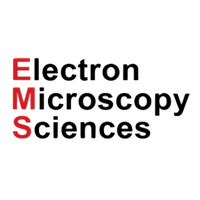
- Collections
Ultrasonic disk cutter and assembley, model 170
The Model 170 Ultrasonic Disk Cutter can swiftly generate disk, cylindrical, and rectangular TEM specimens from hard/brittle materials including ceramics, semiconductors, and geological substances without mechanical or thermal damage. It fabricates disk specimens using materials as thin as 10 m, as well as cylindrical rods up to 10 mm long, from bulk samples or rectangular wafers, which are then utilized to produce cross-section TEM specimens.
Optimised Ultrasonic Cutting
Wafers are created using an ultrasonic method that combines the 26 kHz vibration of two lead zirconate titanate crystals. An abrasive slurry of boron nitride or silicon carbide is used as the cutting medium. This fast cutting technique reduces specimen loss and gives excellent samples in a matter of minutes. When the tool comes into touch with the specimen plate, an automated terminator stops cutting.
The cutting tool motion is generated by the excitation of lead zirconate titanate crystals vibrating at a frequency of 26 kHz. A coarse slurry of boron nitride or silicon carbide is used as the cutting medium. The tool action is designed to cut at the fastest possible pace while minimizing thermal and mechanical sample damage.
Unique Design
It has a one-of-a-kind design in which the specimen is always shown parallel to the cutting axis. Using the optional microscope will enable site-specific cutting easier by assisting in locating the region of interest. A dial indicator will precisely indicate the cutting tool depth. Once the specimen has been sliced, the operation will immediately end.
Contant-Force Stage
The specimen stage uses continuous force to move the material parallel to the cutting tool during the cutting process to generate specimens with consistent diameters.
Autotermination
A low-melting-point polymer is used to attach the specimens to an aluminum specimen plate. Two thumbscrews securely fasten the specimen plate to the specimen container, ensuring electrical connection between the container and the stage. An electrical continuity detector determines when the cutting process is complete. The cutting tool and ultrasonic transducer assembly are kept at ground voltage. A +0.8 VDC signal is applied to the specimen stage. When contact is achieved between the tool and the specimen plate, continuity is detected and the operation is automatically stopped. An override switch allows the user to continue cutting even after continuity is detected. When cutting conductive material, a specimen plate with an insulating layer on its surface is used to isolate the specimen from the termination signal.
Features:
- Rectangular wafers for transmission electron microscopy cross-section (XTEM) specimens
- Rapidly cuts disks, rods, or rectangular specimens
- Disk specimens from materials as thin as 10 µm
- Thin (>10 µm) or thick (<1 cm) specimens
- Rods up to 10 mm long
- 10 µm resolution depth indicator
- Specimen is always parallel to the cutting axis
- Minimal mechanical and thermal damage
- Automatic termination
- Precise sample positioning
- Optional microscope attachment
Specifications
| Model 170 Ultrasonic Disk Cutter | |
| Cutting tools | Available in standard 2.3 mm and 3 mm diameters and rectangular sizes of 2 x 3 mm and 4 x 5 mm |
| Dimensions (W x H x D) | Without microscope: 5 x 15.1 x 10.5 in / 127 x 384 x 267 mm With microscope: 9 x 15.1 x 10.5 in / 229 x 384 x 267 mm |
| Weight | 15 lb. (6.8 kg) |
| Power Requirements | 110/220 V AC, 50/60 Hz, 250 W |
| Warranty | One Year |
| Optional Microscope Attachment | |
| Magnification | 40x |
| Position repeatability | Greater than 10 µm |
Model 170 Ultrasonic Disk Cutter Includes
- (3 each) Titanium Tool; 3 mm Diameter Disk
- (5 each) Copper Washer
- (5 each) Specimen Plate
- (1 each) Tool Wrench Assembly
- (1 each) Specimen Container Assembly
- (1 each) Syringe Assembly
- (1 each) Disc Cutter Extender Kit
An optional microscope attachment for the ultrasonic cutting head helps locate the specific area of interest in the bulk material and enables site-specific cutting of the specimen. A simple alignment procedure adjusts the microscope's position in relation to the cutting tool. A precision mechanism establishes the angular positioning of the microscope and ultrasonic cutting head with a repeatability of better than 10 µm.
| Code | Title | Type | Pack Size | Availability | Price | Updated: 28-04-2024 |
|---|---|---|---|---|---|---|
| E55186 | Ultrasonic disk cutter and assembley, model 170 | Disk cutter | Each | See above | Quote only | Quote |
| Quote | ||||||
| E55186-01 | Ultrasonic disk cutter and assembley, model 170 | Microscope attachment assembly | Each | See above | Quote only | Quote |
| Quote | ||||||
| E55186-02 | Ultrasonic disk cutter and assembley, model 170 | Square cutting tool | Each | See above | Quote only | Quote |
| Quote | ||||||
